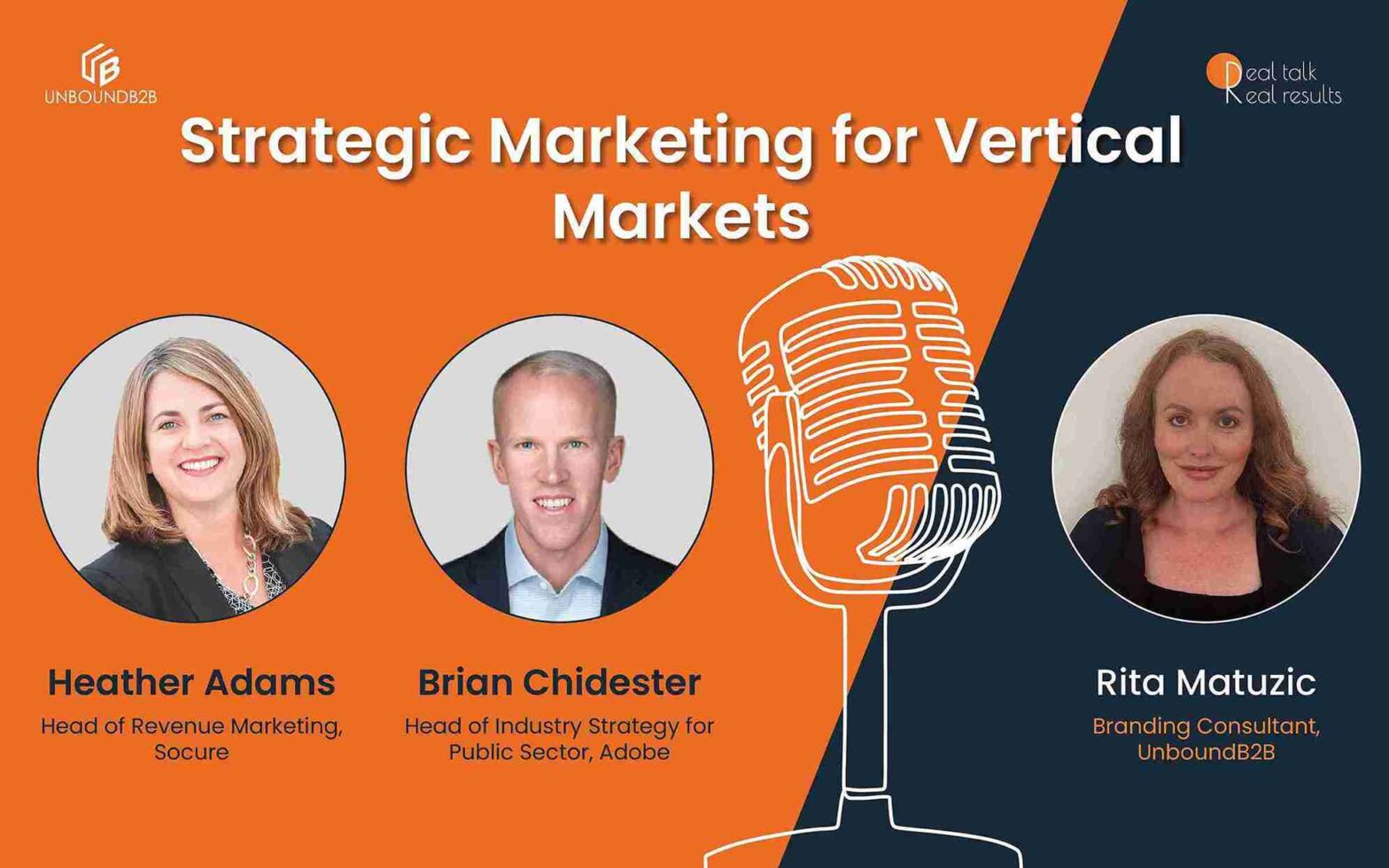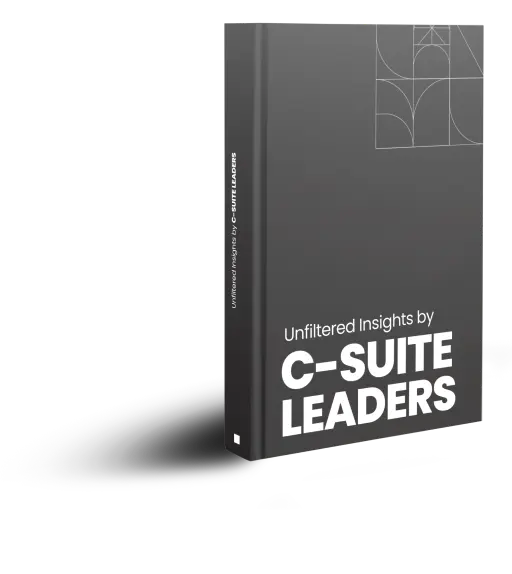
Vertical marketing and ABM are a natural fit for today’s marketing landscape.
Whether you’re a B2G marketer targeting the public sector or a B2B marketer engaging organizations across vertical markets, standing out from the crowd requires strategic and personalized marketing motions that earn the right attention from the right people.
According to research from Forbes, most ABM programs see measurable improvements across organizational objectives, including 84% growth in pipeline, and a 72% increase in marketing ROI compared to other program types.
To better understand vertical markets and ABM in public sector marketing and commercial marketing, we met with Brian Chidester, Head of Industry Strategy for Public Sector at Adobe, and Heather Adams, Head of Revenue Marketing at Socure.
UnboundB2B: Where is the overlap between B2G marketing and B2B marketing?
Brian: To me, it’s all one. There are a couple of nuances, like compliance measures, but in the public sector, people see themselves as verticals. Very often, we’ll call it the industry of industries.
People who work for the Department of Energy or Department of Transportation think of themselves not just as public sector professionals, but as energy or transportation professionals in their field. The same goes for financial services.
I see a very significant overlap, especially when you get into the specifics of digital identity. It boils down to the types of personas and use cases you’re targeting.
Heather: There are differences in the buying and procurement processes between the two groups, but there are a lot of similarities between commercial marketing and government marketing.
In terms of marketing messaging and programs, both sides focus on the challenges they’re trying to solve, the goals they’re trying to meet, and the vendors they partner with to move them down that path.
UnboundB2B: How do you approach vertical marketing, strategy, planning, and execution in public sector marketing and commercial marketing?
Heather: Vertical marketing is core to the ABM strategy we’re putting in place.
Socure is a technical product with a complex and sometimes lengthy sales cycle. The more we can learn the specifics around use cases, the challenges of each of the vertical markets we’re targeting, and speak their language—and the more we can show that through our content, messaging, and channels—the more success we see from our programs.
We also look at our specific verticals and how they’re tackling the challenges specific to them within their vertical market, how we can align the solution we’re bringing, and how we message that to speak their language.
Brian: That’s spot on—each vertical market has a distinct language within an industry. It’s that specific language that makes the difference. The use cases are very much the same, but it’s about being that translator for what the value is and then identifying the personas.
Within a commercial entity, you might be focused on only one persona across multiple organizations—like targeting a CIO or someone with a “digital identity” title.
Within government, it all depends.
Let’s take a state government for example. It depends on whether that CIO has federated their IT services or not: Are they centralized or decentralized? That makes a big difference in terms of how you target the personas and how you message the value.
It sounds complex, but it boils down to exactly what Heather said: it’s about the message and the language you use that is specific and niche to that industry.
UnboundB2B: What challenges arise when you’re creating so much personalized messaging—and how can we overcome them?
Brian: We have to be very clear on how we’re stating our value proposition. We may believe AI is the next piece of digital identity and this is what you should be leveraging, but lawmakers may not be sure yet.
Within the public sector specifically, there’s legislation in a majority of states to understand how generative AI will be leveraged and what decision-making looks like, so how we message that becomes very intricate. We don’t want to put a message out there that goes against what policy might align with.
If we get ahead of the market, we can inadvertently negatively position ourselves. That’s just one example of a myriad of different things we need to align to in this dynamic environment.
Heather: Those external factors Brian talked about are so important. This also holds true on the commercial side. There’s no silver bullet on how to engage your audience, especially when you’re handling multiple vertical markets.
When you’re targeting multiple verticals, it helps to have a model in place that aggregates those signals and provides an indication of the verticals where we’re most likely to see success.
Beyond that—at the account level—using that internal data we have amongst those verticals we’ve prioritized, we look at accounts showing in-market signals because they’re engaging with our content, as well as third-party intent signals.
UnboundB2B: How can B2G and B2B marketers engage with sellers to build better partnerships and co-pilot ABM programs?
Heather: It starts with intent and engagement data. With multiple vertical markets on our radar, having a model in place helps marketers aggregate those signals and get a predictive indication of the verticals where we see the highest levels of interest, engagement, and intent.
Combining that data with external market signals helps us to create personalized messaging and content that triangulates our best bets and enables us to focus our hyper-personalized efforts there.
Fostering that alignment comes down to bringing that data to the table. Each week, we have a regular cadence with the SDR, the campaign leaders, and the direct sellers, where they come together with the shared goal of looking at the signal, the engagement, and the intent we’re seeing within those accounts the direct seller(s) cares about.
From there, we look at the data and figure out how to best utilize it. If we’re seeing in-market signals from our target accounts, how can we tap into it, prioritize our outreach, and tailor our messaging to capitalize on that?
Just that motion has started to foster a lot of trust between marketing, the SDR, and the AE.
Brian: Data is so valuable. Since we’re an industry of industries, one of the things we’re always exploring in the public sector is what other industries we can align with.
You have to figure those out by experimenting, not just hypothesizing to “see what happens.” We have tested certain vertical markets to see if there’s a real opportunity—and data helps us with that, whether it’s budget data or engagement data.
You also have to know when to say when. You have to be willing to change directions, pull back your resources, and put them in other places where there’s value. You have to know use data in a tactical way to pivot.
Are you fluent in the language of your vertical markets?
As a growing number of buyers expect personalized, relevant interactions with the organizations competing to get in front of them, the organizations that embrace innovation and technology to thoroughly understand the buying landscape stand to earn the biggest wins—whether they’re public or private.
This article is an edited excerpt from the conversation with Brian Chidester, Head of Industry Strategy for Public Sector at Adobe, and Heather Adams, Head of Revenue Marketing at Socure.
For more insights on public sector and commercial marketing for vertical markets, watch the full episode of the Real Talk Real Results podcast with Brian Chidester and Heather Adams.
Our blog
Latest blog posts
Tool and strategies modern teams need to help their companies grow.

SaaS growth has never been more challenging. SaaS companies must move faster and smar...

In the absence of a solid lead scoring system, your sales team will spend time pursui...

Programmatic ABM combines the effectiveness of targeted engagement with automation. I...





